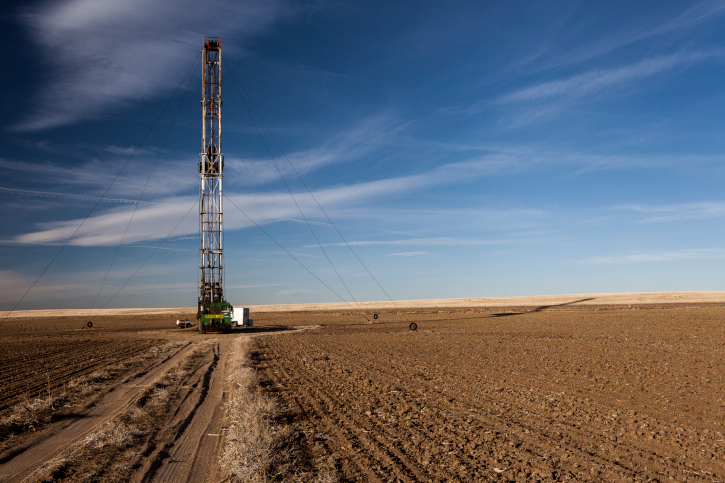Oil prices have plummeted to six-year lows, with the price for West Texas Intermediate crude briefly dipping below $39 per barrel. But oil production in the United States has not plummeted the way some had expected.
Conventional wisdom had pegged the break-even cost for oil wells using horizontal hydraulic fracturing, aka “fracking,” to be between $65 and $85 dollars per barrel. Many expected smaller American producers to go belly-up as a result of low prices.
However, advances in drilling and well-completion technology, such as multi-well drilling pads and walking rigs, have made oil and natural gas production far more efficient. The walking rigs have essentially kept frackers far from “dead.”
Multi-well drilling and walking rigs have become important because the fracking revolution has dramatically changed the way we produce oil and natural gas over the past 10 years. Unlike conventional oil and gas production, which takes place in permeable rock formations such as sandstone, fracking develops oil and gas from shale, which requires fracking. Multiple wells must be drilled in different directions to tap these resources from the rocks below.
As a result, multi-well pads quickly have become more prevalent in nine major shale formations, increasing from 5 percent of wells drilled in 2006 to 58 percent in 2013. Through this process, six, 10 or even 51 wells can be drilled from a single compact drilling pad.
Drilling multiple wells from the same pad lets oil and gas producers develop more resources. But doing so using traditional, stationary drilling rigs is inefficient and costly, because the rigs must be disassembled, moved to the next well location and reassembled in order to drill the next well, a process that can take as long as a few days and cost up to $1 million.
The inefficient nature of these rigs spurred the development of walking rigs, which dramatically cut costs and the time required to move a rig.
Although the “walking” of these rigs looks more like a sea turtle awkwardly crawling across the beach, these rigs do not have to be disassembled and can move as far as 30 feet in less than an hour. This can save drillers as much as 30 percent of the cost of drilling a well.
These savings are a key reason why walking rigs now outnumber traditional rigs by a count of about 650 to 500.
Moving drilling rigs in a matter of hours, instead of days, has also let oil and gas producers drill more wells with fewer rigs. The oilfield services company Baker Hughes reported a 9 percent increase in the number of wells the average U.S. land drilling rig produced in the fourth quarter of 2014 compared to the same period in 2013.
As a result, oil production continues to increase despite a drop in the number of rigs.
Technologies such as walking rigs and other drilling and well completion innovations have increased the output of drilling rigs by 600 percent, on average, over the past several years and have slashed production costs.
That’s a key reason why the Energy Information Administration estimates U.S. oil production increased by about 300,000 barrels per day in the first half of 2015, despite oil prices falling to about one-third of the price paid for oil in June 2014.
Despite the wishes of the Organization of Petroleum Exporting Countries, American ingenuity means fracking is here to stay.





